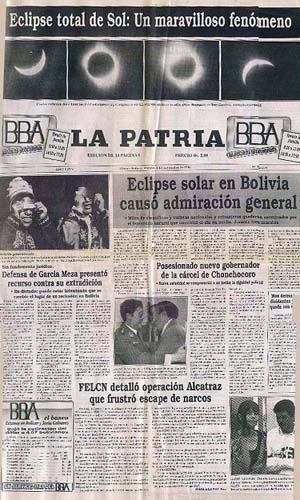We arrived late in the afternoon of Nov. 2. The site was divided by the local river and road into four parts: one for the scientists (our spot), one for the tourists, another for locals, and another for children. The national police ringed our site not letting people pass unless they had the proper IDs (it was the plum site, being less crowded than the other quadrants). Rumors that the president of Bolivia was going to show up at our site were unfounded, to the relief of some who feared dust storms being kicked up by his helicopter. However, this did not stop the wind from kicking up a nasty dust storm later that evening.
Unfortunately, dust turned out to be the least of our concerns since the skies that afternoon and evening before the big event were awfully cloudy. With predictions circulating that eclipse morning was going to be marred by high cirrus clouds, there was talk about driving a couple hundred miles along the centerline of the eclipse path to try to find clearer skies.
